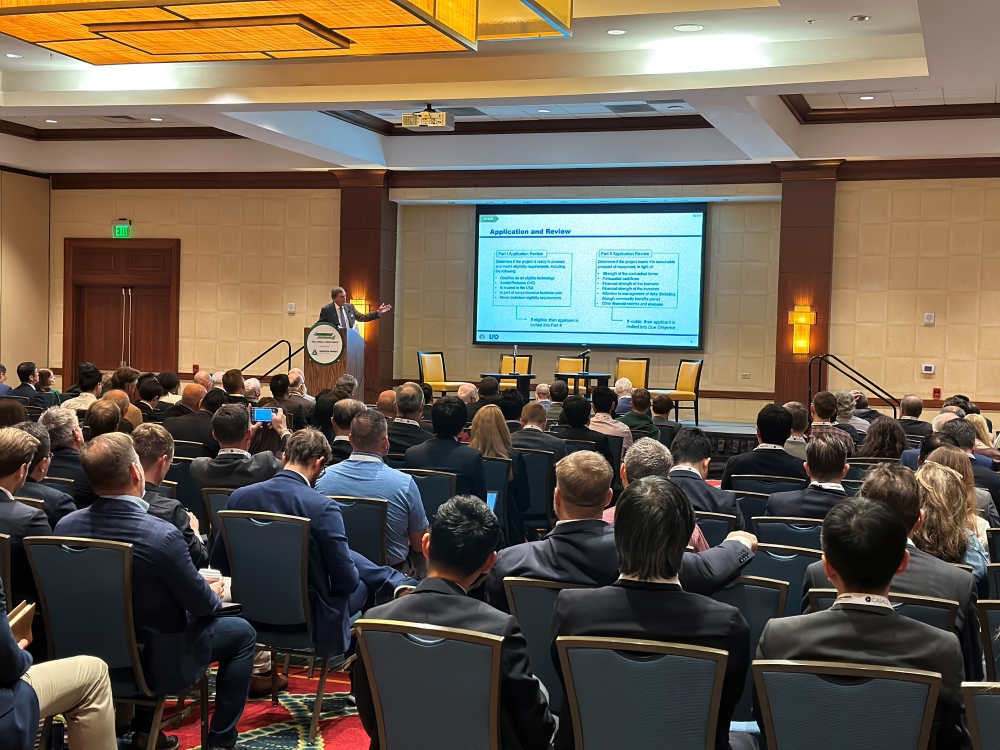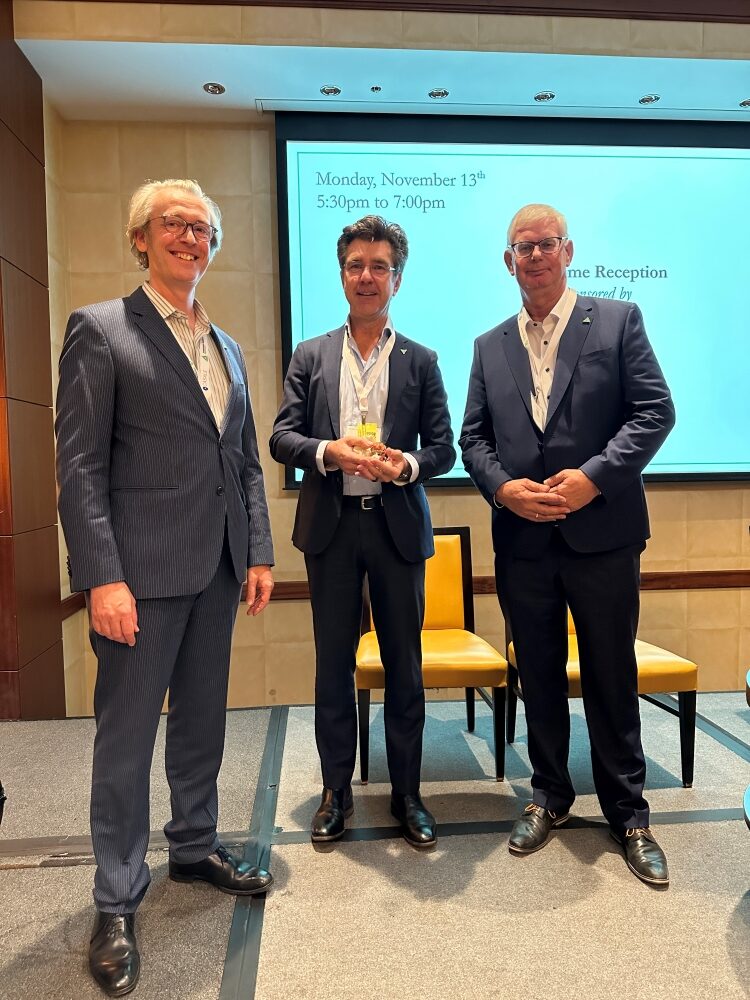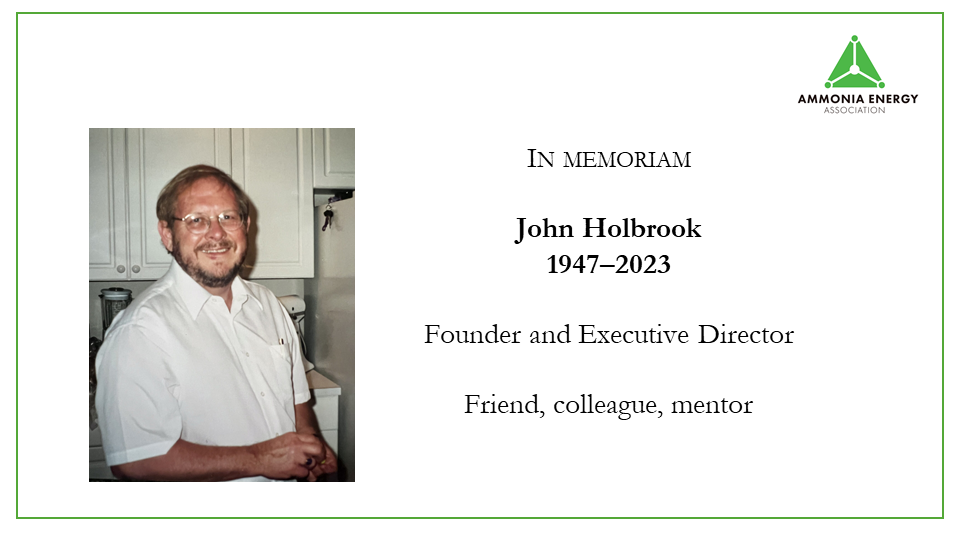Celebrating 20 years of the AEA
By Hans Vrijenhoef on November 27, 2023

This month, I would like to reflect on our 20th annual conference held in Atlanta, USA. Two decades ago, a few visionaries came together to organise the first-ever conference of the NH3 Fuel Association. They hoped to get something done for a cleaner world, using ammonia as the enabler. These initial founders – people like Norm Olson, Michael Reese and John Holbrook – all had outstanding careers and academic qualifications. But, the Association had little standing back then.
Twenty years later we see a completely different situation, with no less than the World Bank presenting our conference keynote. They, amongst many others, see ammonia as a way to enable the coming energy transition. Working in cooperation with hydrogen, hydrogen derivatives and other energy possibilities, ammonia is needed to reach our final goals.
The keynote highlighted that a very small percentage of projects – especially the larger, GW-scale ones – have not reached FID. But, the list of projects is extremely large, totaling some 40 Mtpa worth of hydrogen production in 2033. In order to reach our 2050 targets, some 600 Mtpa ammonia production capacity should be added as a minimum, coming from either renewables or CCS.
Many stakeholders still question the efficiency of converting renewable energy into ammonia. But the abundant availability of nitrogen worldwide stands in direct contrast to the low availability of CO2 in biomass for making SAF or e-methanol. Much of the existing infrastructure for ammonia production, transport & handling can be fed with cheap renewable energy, and new projects will increase capacity. Considering the logistics and volumes of new fuels required to meet our climate goals, ammonia stands out.

These considerations should be the basis for accelerating the execution of ammonia projects. Now is the time to start developing, de-risking and reaching FID for projects of all sizes. Indeed, smaller-sized projects can be highly effective by starting faster and proving to the general public that our new industry can do this safely and without incident. Building public confidence will be crucial to reaching the large-scale production & storage of ammonia needed in future.
This conference was full of great stories, all based on the hard work of our presenters, attendees and their companies. It was incredible to see the sheer volume of safety, design & operational assessments that have already been completed, and the conference was a great opportunity to share these outcomes and start working out how we can collaborate. Together, we can bring to the public a profound story about the safe use of clean ammonia in the future energy mix. Our organisation needs to be in full voice on this.
I’m immensely proud that – as a result of discussion in Atlanta – many of our members have agreed to ramp up their focus on ammonia safety awareness. Indeed, this will be one of the areas the AEA will need to focus on over the coming years. Of course, this cannot dilute our important efforts towards certification, knowledge sharing and more. But as our organisation grows and more staff members join the team, our capacity to engage will only increase.
I sincerely thank all sponsors, participants and AEA staff which made the event possible. This was a new style of conference for the AEA, and marks the first time we have “gone solo” on event organising with such a large attendee list (some 300 people). The hard work of our staff team behind the scenes meant the membership was aligned with the new approach. And, there was great feedback on the workshop-style sessions, which really added value for participants.

It was a pity that one of our founding visionaries John Holbrook – who sadly passed away in October – could not see with his own eyes how far the AEA has come. John, you would have been very proud to see how our event has developed, and the important discussions which are now taking place. Your spirit and persistence is being kept alive by the AEA staff & membership, and we will do everything we can to get this pipeline of clean ammonia projects realised as fast as possible.